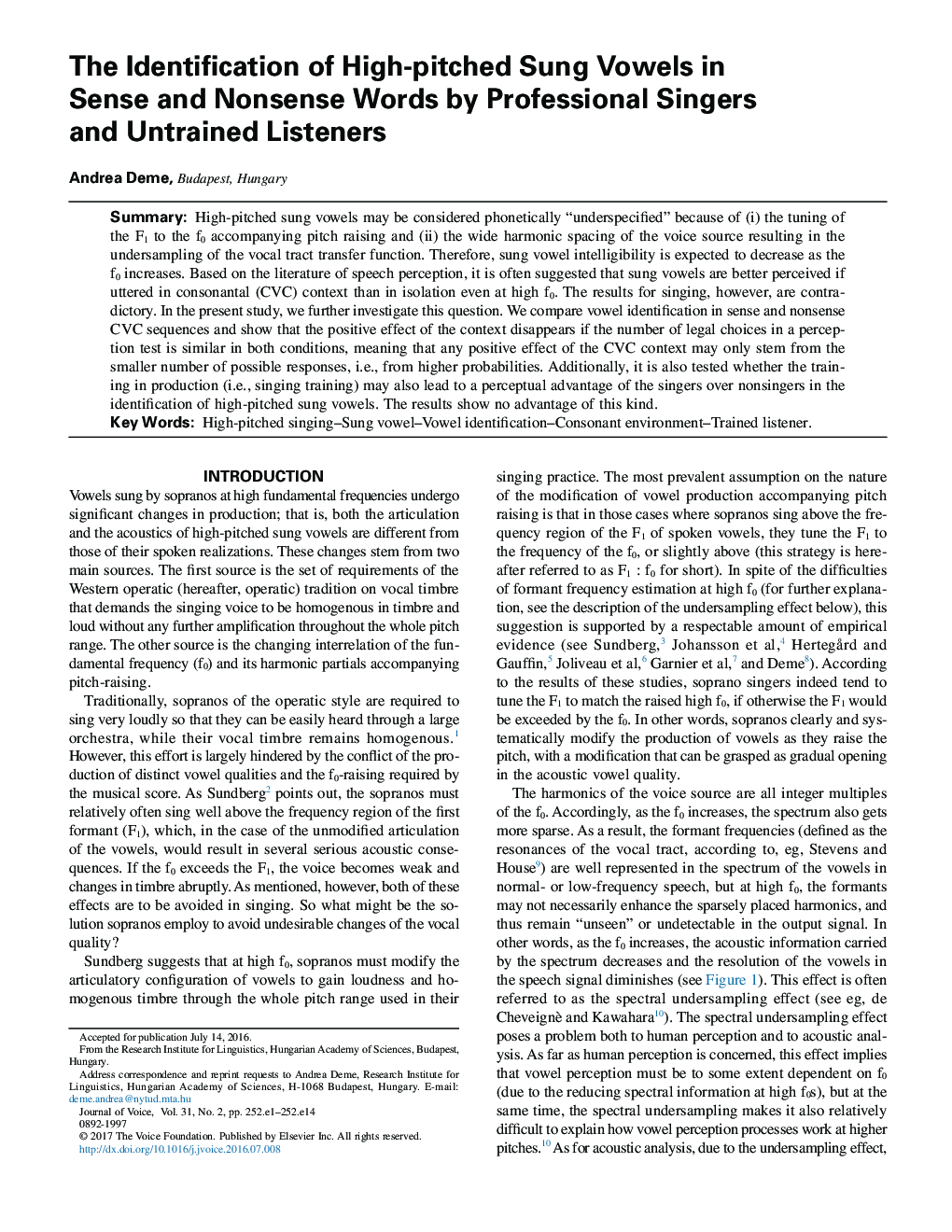| Article ID | Journal | Published Year | Pages | File Type |
|---|---|---|---|---|
| 5124428 | Journal of Voice | 2017 | 14 Pages |
SummaryHigh-pitched sung vowels may be considered phonetically “underspecified” because of (i) the tuning of the F1 to the f0 accompanying pitch raising and (ii) the wide harmonic spacing of the voice source resulting in the undersampling of the vocal tract transfer function. Therefore, sung vowel intelligibility is expected to decrease as the f0 increases. Based on the literature of speech perception, it is often suggested that sung vowels are better perceived if uttered in consonantal (CVC) context than in isolation even at high f0. The results for singing, however, are contradictory. In the present study, we further investigate this question. We compare vowel identification in sense and nonsense CVC sequences and show that the positive effect of the context disappears if the number of legal choices in a perception test is similar in both conditions, meaning that any positive effect of the CVC context may only stem from the smaller number of possible responses, i.e., from higher probabilities. Additionally, it is also tested whether the training in production (i.e., singing training) may also lead to a perceptual advantage of the singers over nonsingers in the identification of high-pitched sung vowels. The results show no advantage of this kind.
